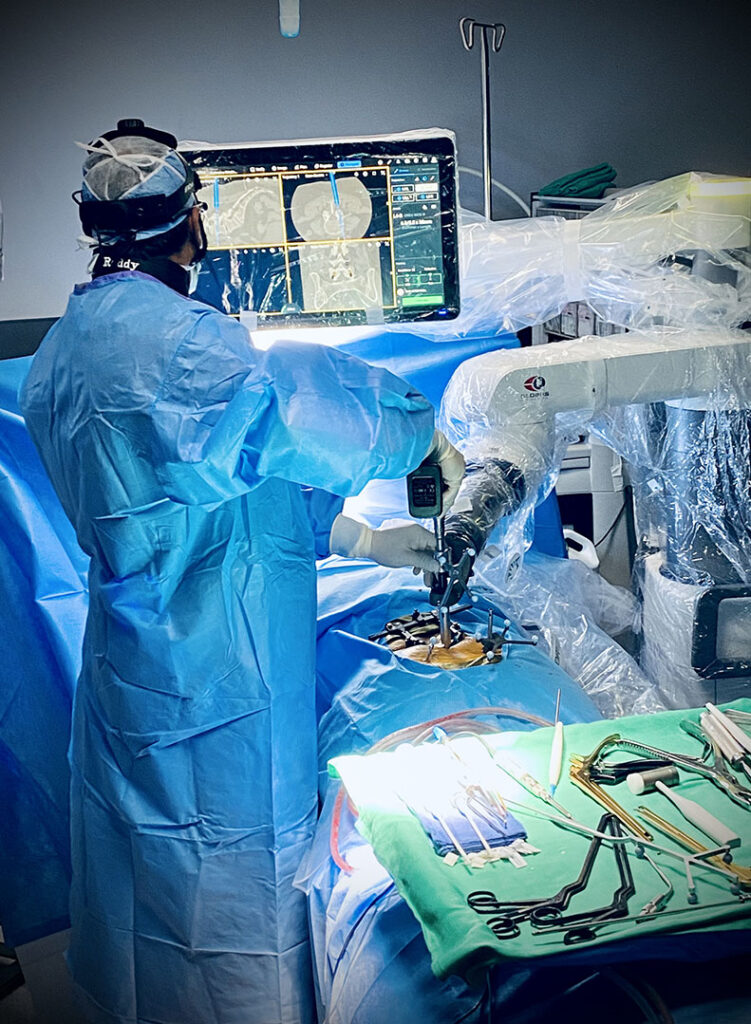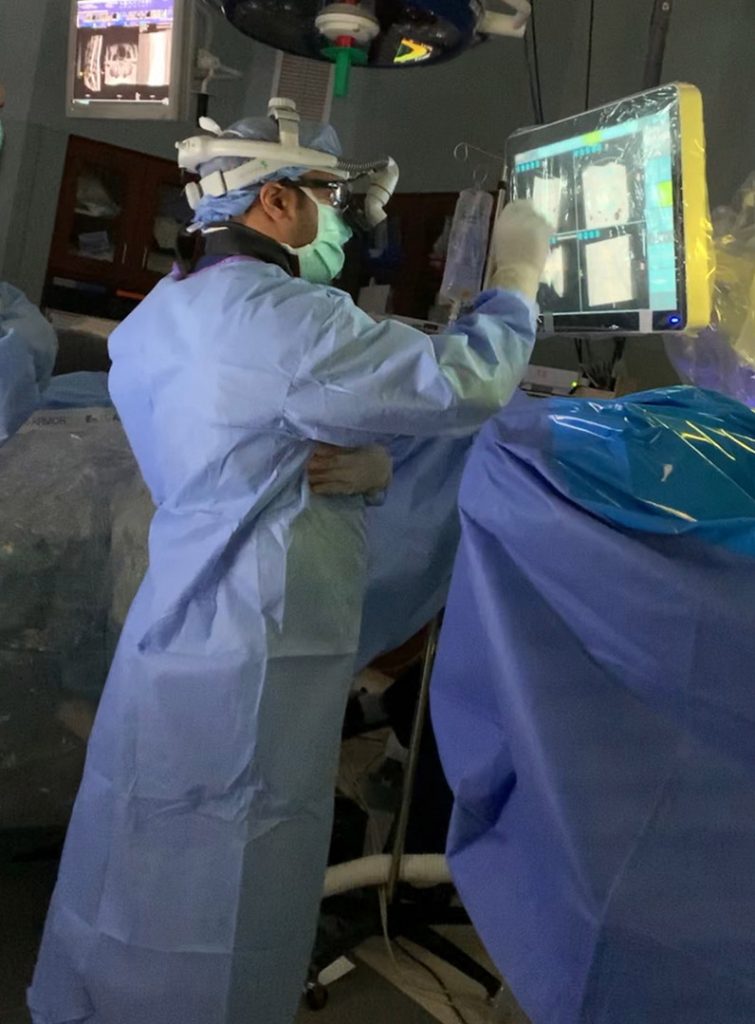
Technology

Minimally Invasive Spine Surgery
Although no one likes having spine surgery, today’s minimally invasive technology makes it much less traumatic. Procedures that once took many hours to perform with days spent in the hospital and months spent in recovery, can now be done in one to three hours with a simple overnight stay in the hospital, or even home the same day.
At its best, minimally invasive surgery doesn’t begin with the incision but with the thought process beforehand. Once Dr. Reddy identifies the problem, he then tailors a minimally invasive procedure around it.
Although minimally invasive surgery can’t be used to correct every spine issue, Dr. Reddy performs it whenever possible and is an expert in all the most advanced techniques – techniques that offer numerous benefits such as:
- Smaller incision means there is less muscle and tissue damage
- Less blood loss
- Less post-operative discomfort or pain
- Fast recovery and healing
- Diminished need for pain medications after surgery
The goal of MISS is to stabilize the vertebrae or spinal joints while relieving pressure on the nerves, which is often caused by conditions like bone spurs, herniated discs, and spine instability.
Robotic Surgery
Robotic surgery – also called robot-assisted surgery – is a highly advanced surgical procedure.
Using robotic surgery, Dr. Reddy can perform many kinds of complex procedures with more precision and control than other surgeons can using conventional techniques.
Utilizing a specialized robotic arm, Dr. Reddy is able to insert his spinal fixation into position with the highest degree of accuracy. Even in challenging situations with distorted anatomy due to revision, tumor, infection, or fracture, he is able to maximize his screw placement technique to get better fixation through smaller incisions with less blood loss. Dr. Reddy controls the arm at all times and uses high-definition stereotactic cameras to monitor the position of his robotic instruments guiding them to the optimal position.
Robotic surgery lets Dr. Reddy perform delicate and complex procedures that may have been difficult or impossible with other methods. And because robotic surgery is minimally invasive, other benefits include:
- Fewer complications, such as surgical site infection
- Less pain and blood loss
- Quicker recovery
- Smaller, less noticeable scars





Dr. Reddy modeled a complex congenital deformity to help understand the kyphosis and the available anatomy to safely place instrumentation.
3D PRINTING ASSISTED SURGERY
Thanks to recent advancements in 3D printing, Dr. Reddy can use the technology to model complex spinal deformities to use as an aid in surgical procedures.
Using a CT scan as a reference, the printer produces a three-dimensional model of the patient’s spine section being operated on, which enables Dr. Reddy to better visualize the spine and perform the surgery more precisely.
“Visualizing complex 3D spinal anatomy can be challenging in some settings, and traditional computer systems can be hard to interact with while operating,” said Dr. Reddy. “Ultimately, the computer is just showing us a 2D image of a 3D structure. Having a 3D model can be very helpful in certain situations, allowing us a more thorough understanding of the anatomy and helping us achieve our goals of surgery.”
In addition, technology is rapidly changing to allow better 3D modeling of structures and the ability to rapidly generate physical models overnight.
Dr. Reddy is at the forefront of 3D printing applications in spine surgery, utilizing 3D models, surgical alignment tools, and even 3D custom-made implants in his complex corrective surgeries.

